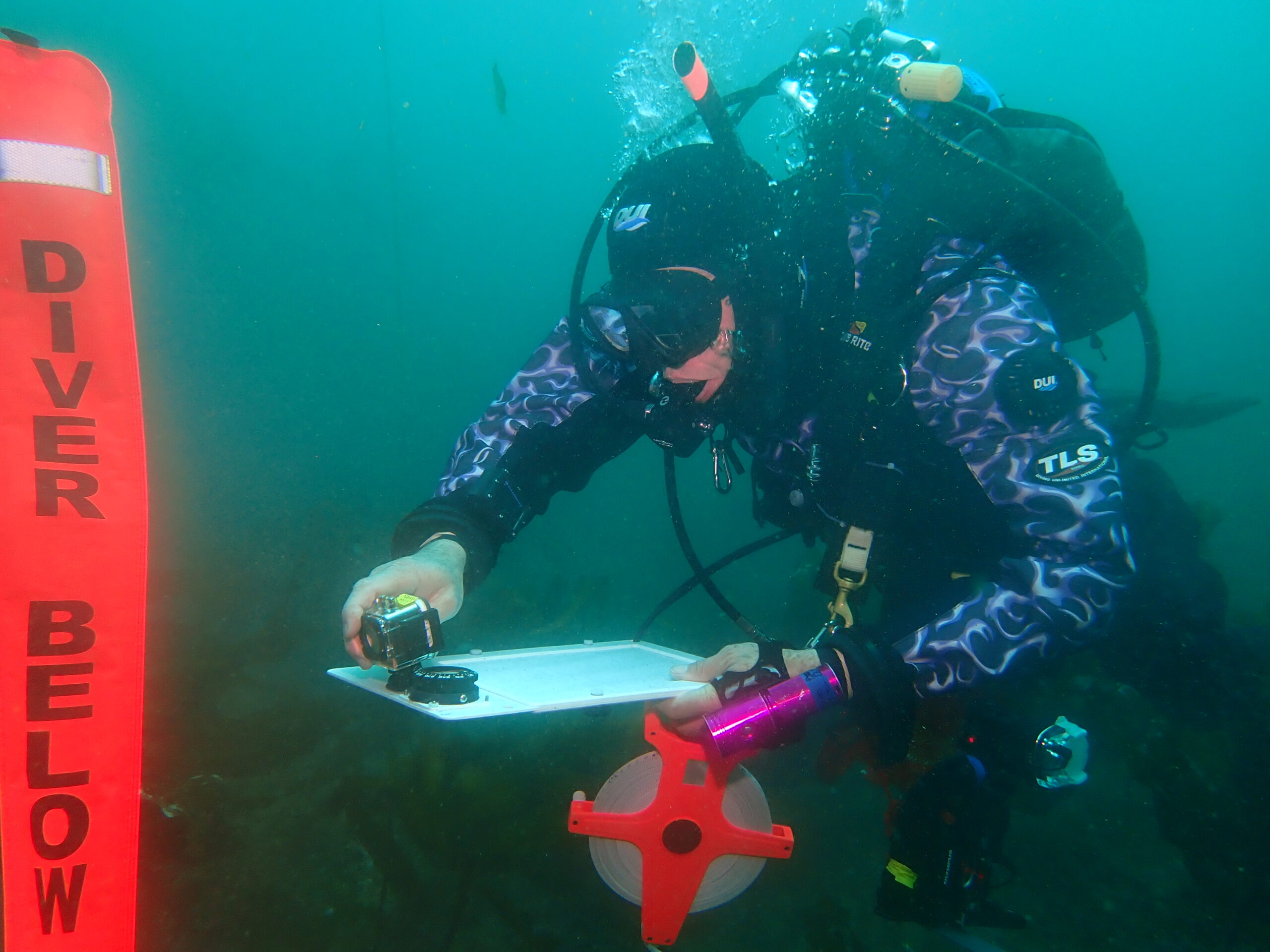Purpose: Watching El Nino Underwater
10 July 2024
By: William Hagey
Point Loma – Acoustic Site 1 (AS1)
Vessels: The Mighty Kelpfish
Topside Support: None
Divers: Ronan Gray, Jim Melrod, and William Hagey
Surface conditions: Short period 1 to 2 foot mixed swell, overcast.
Visibility: 20 ft
Temperature: 51 F
Current: None at the surface and none at the bottom
Dive Time in: 10:00 pm, 43 minutes
Depth Max: 66 ft
Purpose: TLC camera replacement, Transect video
Summary:TLC and miniDOT were placed. Still images and video were taken by W Hagey, Ronan, and Jim Melrod
Equipment Notes: TLC NOAA14 with DOT 551219 was placed and TLC NOAA02 with MiniDOT 142025 was recovered. The TLC was set at a 15 minute interval with and O2 readings were set for every 10 minutes. The UV-C light worked for the whole deployment and there was an obvious area around and including the window that was clear of fouling. The UV-C light had fallen off partway through the deployment, because the aluminum screws had corroded away against the stainless steel bracket. This problem has been known about for months now, but it takes cycles to discover, then fix the problem. So the new camera had SS screws and a zinc anode to protect from corrosion.
The new programming on the UV-C light is 30 seconds every 6 hours, but I think that will be more than needed. The batteries seem to be holding up well through these deployments.
Here’s the video made from the time-lapse images from the previous two months:
2024 05 14Thru2024 07 10 USA PtLoma AS1 A (youtube.com)
Habitat characteristics and surveys:
Methods: Ronan, Jim and I took photos and videos as we did our work. I swam a 100M transect. The SJ cam ran out of memory part way through – see Dive Details for more.
Transect: We swam a 100M meter transect at 300 degrees magnetic with my video SJ action cam. The SD card filled up so I didn’t get a full recording. I used my Olympus camera to recorde Ronan as he reeled in the tape. But, the auto focus was going in and out, so it was not ideal. Also, there was so much particulate in the water that there were issues with backscatter. There was Ptaragophera and Pelagophycus scattered in the first half of the transect. Then for the second half of the transect there was a lot of growing Pelagophycus.
Abalone: I saw no live abalone. The red may have been there, but it was dark and a lot of particulate in the water.
Dive Details: We had no trouble finding the TLC. I spotted it as I was swimming down the anchor line. Note, the boat was north of the anchor, which is unusual. It may have also helped that we were sure to stop on site and the anchor drops very quickly from the Kelpfish. I went ahead and sent up a float that should have given me a pretty good target for next time. We were a little confused though because when we came to the surface it seemed to be in a different place than we expected. Maybe next time we should use a spot half way between these two points? I also placed a yellow spray painted paver half way under the reef to the side of the TLC to help us find this spot again if the camera ever gets blown away again.
Notes to future selves:
1) When looking for the camera, it is probably best to leave the replacement TLC near the anchor and look. This is for two reasons, a) I can swim faster without it, and b) my hands will be able to do other things, like taking notes or pictures while looking.
These images were from the previous 2 deployments. The next image was from the camera just recovered. The alignment is pretty good.

